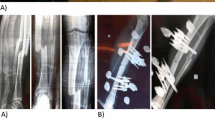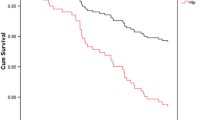Abstract:
The risk factors for falls in older adults are well known but knowledge on the direct injury mechanisms that result in various osteoporotic fractures has been very sparse. The purpose of this study was therefore to clarify the injury mechanisms of osteoporotic upper extremity fractures of older adults and to compare these mechanisms with those of the control fallers, and in this way to obtain reliable insight into the etiology and pathogenesis of upper extremity fractures and thus to enable fracture prevention. One hundred and twelve patients with a fresh fracture of the proximal humerus, 65 patients with an elbow fracture, 110 patients with a wrist fracture and 108 controls (no fracture, or a fracture other than the case fracture) were interviewed and examined between September 1995 and December 1997. The inclusion criteria of the subjects were that the patient was 50 years of age or older at the time of the accident, and that the fracture/injury had occurred as a result of low-energy trauma (typically a fall from standing height or less) within a week before the interview and examination. In 97% of patients with a proximal humerus or elbow fracture, and in all patients (100%) with a wrist fracture, the fracture was a result of a fall. In the control group this figure was 93%. In a polychotomous logistic regression analysis the intergroup differences in the fall directions (adjusted by gender, age and functional capacity) were statistically highly significant (χ2= 43.6, d.f. = 15, p<0.001). Most of the patients with a proximal humerus fracture or elbow fracture reported that they had fallen “obliquely forward” (43% and 38%) or “to the side” (29% and 26%), whereas in the wrist fracture group the main fall direction was also “obliquely forward” (34%) but the other fall directions (i.e., “forward”, “to the side”, “obliquely backward” and “backward”) were quite equally represented (13–19%). The odds ratio (OR) for an obliquely forward fall resulting in a proximal humerus fracture was 3.5 [95% confidence interval (CI) 1.4–9.2), as compared with the fall directions of the controls and the “obliquely backward” fall direction. In a logistic regression analysis the patients with a wrist fracture managed to break their fall (e.g., with an outstretched arm) more frequently than the patients in the other groups (OR 3.9; 95% CI 2.0–7.3). The patients with a proximal humerus fracture, in turn, managed to break their fall less frequently than the controls (OR 0.33; 95% CI 0.14–0.80). The same was true of the patients with an elbow fracture, although the difference was not significant (OR 0.49%; 95% CI 0.19–1.3). As objective evidence for a direct fall-induced impact on the fracture site, 68% of patients with a proximal humerus fracture revealed a fresh subcutaneous hematoma on the shoulder/upper arm, while such a hematoma was rare in the controls (2%) (p<0.001). Correspondingly, 62% of patients with an elbow fracture showed a similar hematoma on the elbow area, while this was seen in none of the controls (p<0.001). In patients with a wrist fracture a hand/wrist hematoma was seen in 58% of the victims, as compared with 18% of the controls (p<0.001). The study shows that the most typical osteoporotic upper extremity fractures of older adults have their specific injury mechanisms. A great majority of these fractures occur as a result of a fall and a subsequent direct impact of the fractured site. Effective fracture prevention could be achieved by minimizing the obvious risk factors of falling and reducing the fall-induced impact force with injury site protection.
Similar content being viewed by others
Author information
Authors and Affiliations
Additional information
Received: 13 January 2000 / Accepted: 11 April 2000
Rights and permissions
About this article
Cite this article
Palvanen, M., Kannus, P., Parkkari, J. et al. The Injury Mechanisms of Osteoporotic Upper Extremity Fractures Among Older Adults: A Controlled Study of 287 Consecutive Patients and Their 108 Controls . Osteoporos Int 11, 822–831 (2000). https://doi.org/10.1007/s001980070040
Issue Date:
DOI: https://doi.org/10.1007/s001980070040




